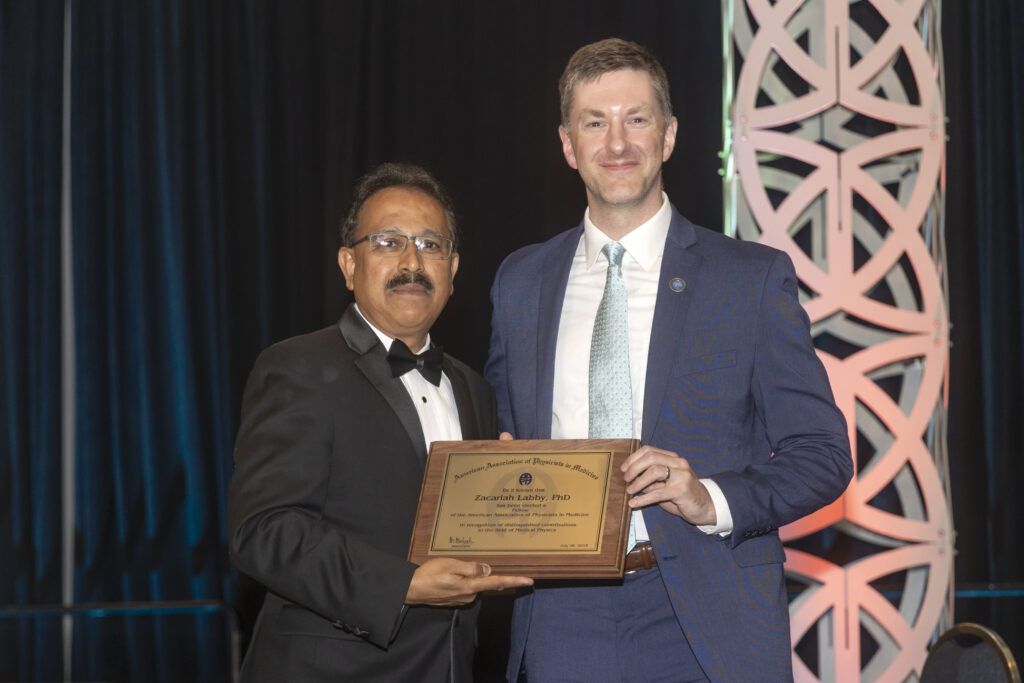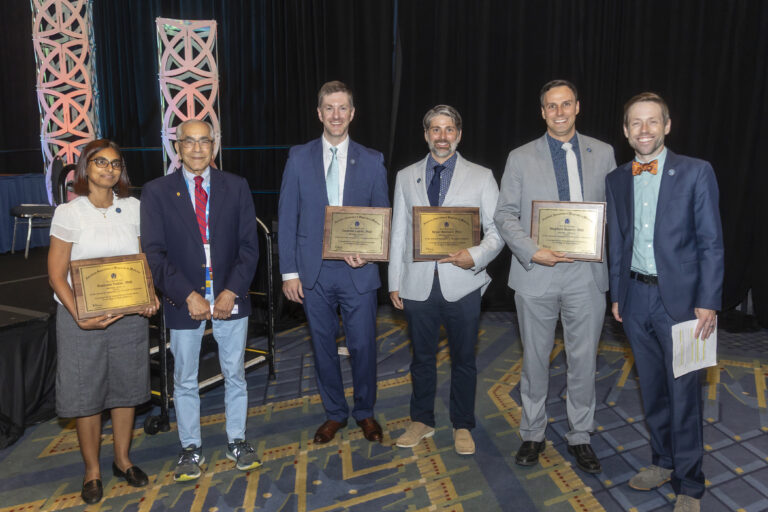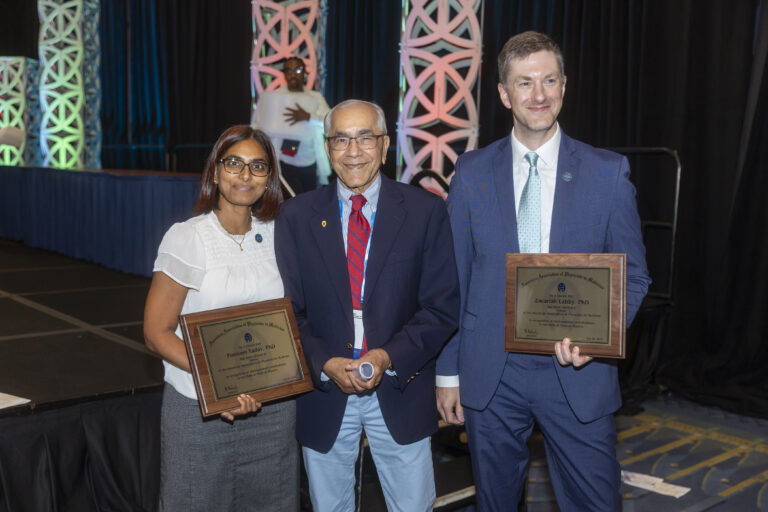
Zac Labby, PhD, DABR, FAAPM, associate professor in the Department of Human Oncology, has been named a 2025 Fellow by the American Association of Physicists in Medicine (AAPM). He was honored during an awards ceremony July 27, 2025, in Washington DC during AAPM’s 67th annual meeting. A longtime AAPM member, Labby was also recently elected to the organization’s Board of Directors by the North Central Chapter of the Association.
The AAPM Fellows program recognizes individuals who have made significant contributions to the field of medical physics through service, research, education and training, and leadership in the practice of medical physics. Dr. Labby was one of only 33 AAPM members to receive the honor this year. The FAAPM designation has been bestowed upon ~800 of AAPM’s 9,000 members across 94 countries.
AAPM, founded in 1958, is the premiere scientific and professional organization for medical physicists. “AAPM plays such an important role for our profession; they help define what it means to be a medical physicist and advocate for all of us in the field. As an organization, there are members who focus purely on clinical work, those who are passionate about academic research, and members who primarily educate medical students and residents as they progress in their careers,” said Dr. Labby. “AAPM also contributes to the science and practice of physics in medicine through their scientific and professional reports. Professionals know to turn to AAPM when questions arise about current state-of-the-art treatments and technology, or when searching for best practices and rigorous standards. To be considered a trusted senior member of this association is such an honor and fills me with pride.”
Dr. Labby joined AAPM in 2008 as a graduate student and became a full member in 2014 upon completion of his residency. He has served as president of the North Central Chapter, has been a reviewer for AAPM’s journal Medical Physics and the Journal of Applied Clinical Medical Physics, he reviews submitted abstracts for inclusion in the annual meeting presentation lineup each year, and since 2017 has helped lead the business management of the Association’s journals. Additionally, he currently sits on the finance committee.
Dr. Labby joined the UW-Madison department of human oncology in 2014 and has held many leadership roles in the years since. From 2016-2022 Dr. Labby was the Physics Residency Program Director, overseeing the day-to-day efforts of our residents. He was awarded Clinical Physics Educator award in 2019 by the department’s residents for going above and beyond to help teach and educate physics and physician residents.
Since 2020, Dr. Labby has been the Director of Clinical Physics for the department. In this role, he ensures the safe, effective and accurate delivery of radiation to patients as well as the protection of the public from treatment activities. “A unique facet of radiation oncology is that the medicine we provide is invisible. As a field, we rely on multiple quality and safety checks during all stages of planning and treatment to confidently provide the highest level of patient care possible while delivering this highly effective treatment option in the safest and most robust way,” said Dr. Labby.
Dr. Labby is also the lead physicist for the department’s stereotactic radiosurgery (SRS) program. Radiosurgery involves precisely treating very small lesions that a patient may have in their brain in a way that delivers little toxicity to the patient due to the compact dose required. It is an area of the field that is evolving rapidly to address benign conditions as well, which could help many new patients.
"AAPM plays such an important role for our profession; they help define what it means to be a medical physicist and advocate for all of us in the field....To be considered a trusted senior member of this association is such an honor and fills me with pride."
Zac Labby, PhD, DABR, FAAPM


When asked about mentors that have inspired him and provided guidance during his tenure at UW, Dr. Labby replied without hesitation that there are three individuals who’ve shaped his career, and fueled his motivation to participate in AAPM and to pursue the Fellow designation. Each mentor embodies a different mission of what it means to be a medical physicist; research, education, and professional work.
- Carri Glide-Hurst, PhD, DABR, FAAPM: “Dr. Glide-Hurst has made huge scientific contributions to AAPM during her career and exemplifies a drive for advancement I admire.”
- John Bayouth, PhD: “Dr. Bayouth led the Physics group in our department when I began at UW-Madison. He was president of AAPM and active in both the administration and the education space of the organization. He showed me what being an administrative leader of AAPM could look like and the avenues that could open for my career. I’m very grateful for the opportunities he afforded me as a young faculty member.”
- Jennifer Smilowitz, PhD: “Dr. Smilowitz was involved for years in the group that designs the professional side of the annual meeting. She has helped to co-author some of the important foundational reports guiding professional practice and has given me excellent insight into that collaborative process.”
“One of the pleasures of being faculty here at UW-Madison is that within our own department we have people that cover the full scope of what it means to be an awesome medical physicist. How inspiring to look to all these people and see examples of traits I admire daily,” said Dr. Labby.
Outside his clinic responsibilities, Dr. Labby’s research interests include methods to improve the accuracy of treatment alignment and delivery strategies, with the goal of reducing the total spatial uncertainty in SRS treatments, and to develop new treatment planning strategies for SRS patients.
Dr. Labby practices at Eastpark Medical Center, the future home of proton therapy in Madison, WI. He was instrumental in opening the new facility last year and is passionate about the work currently being done there, as well as new advancements on the horizon.